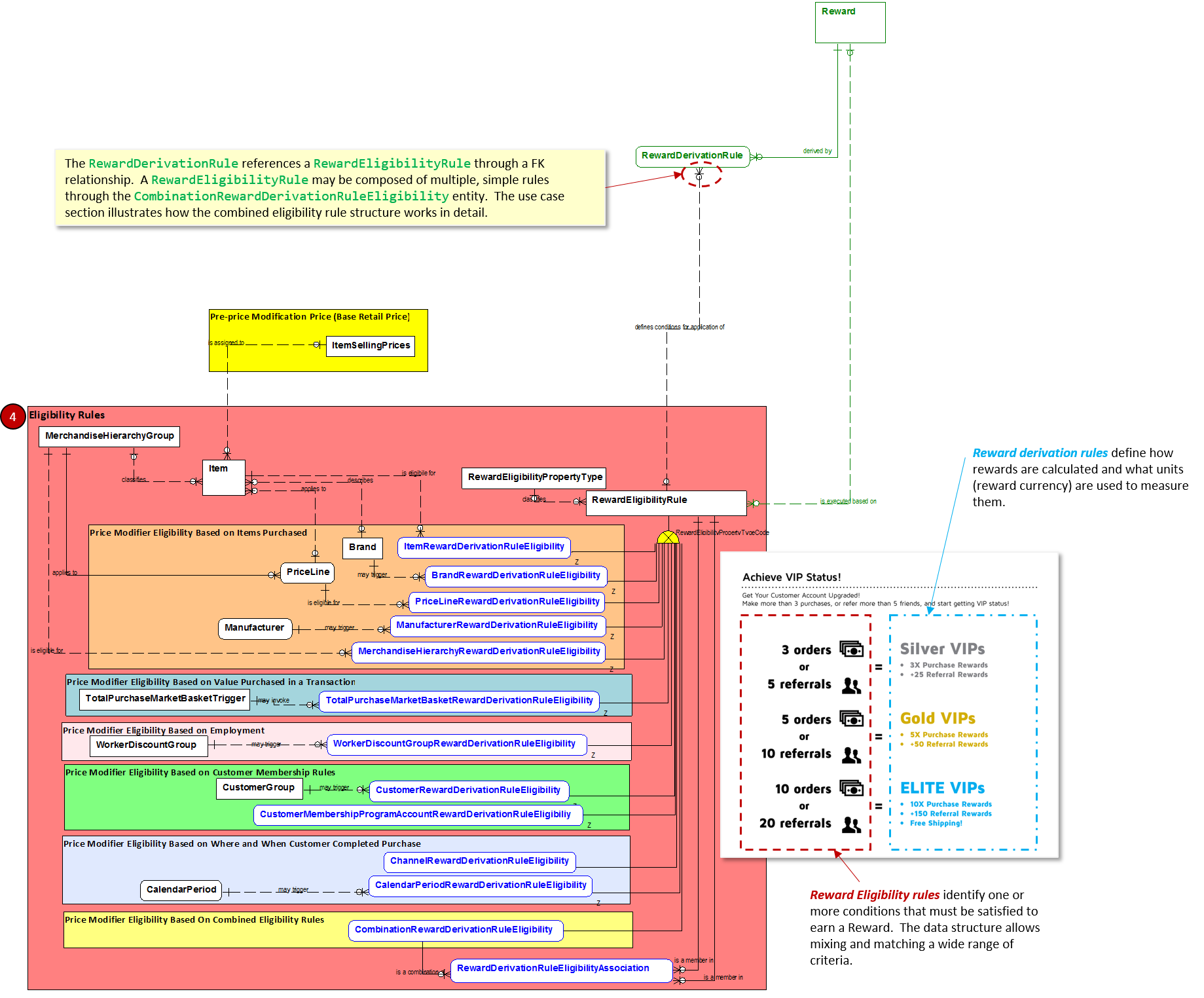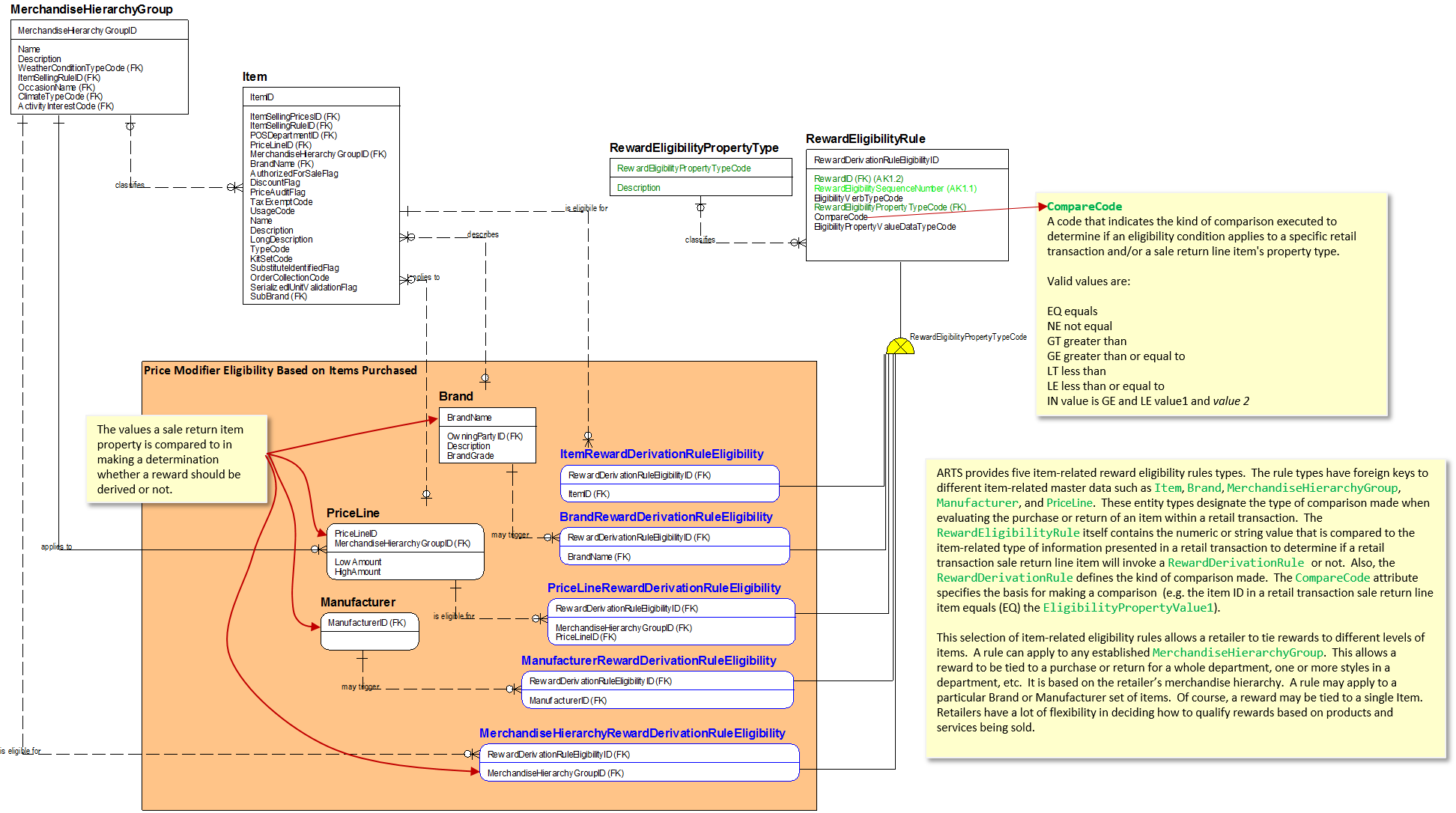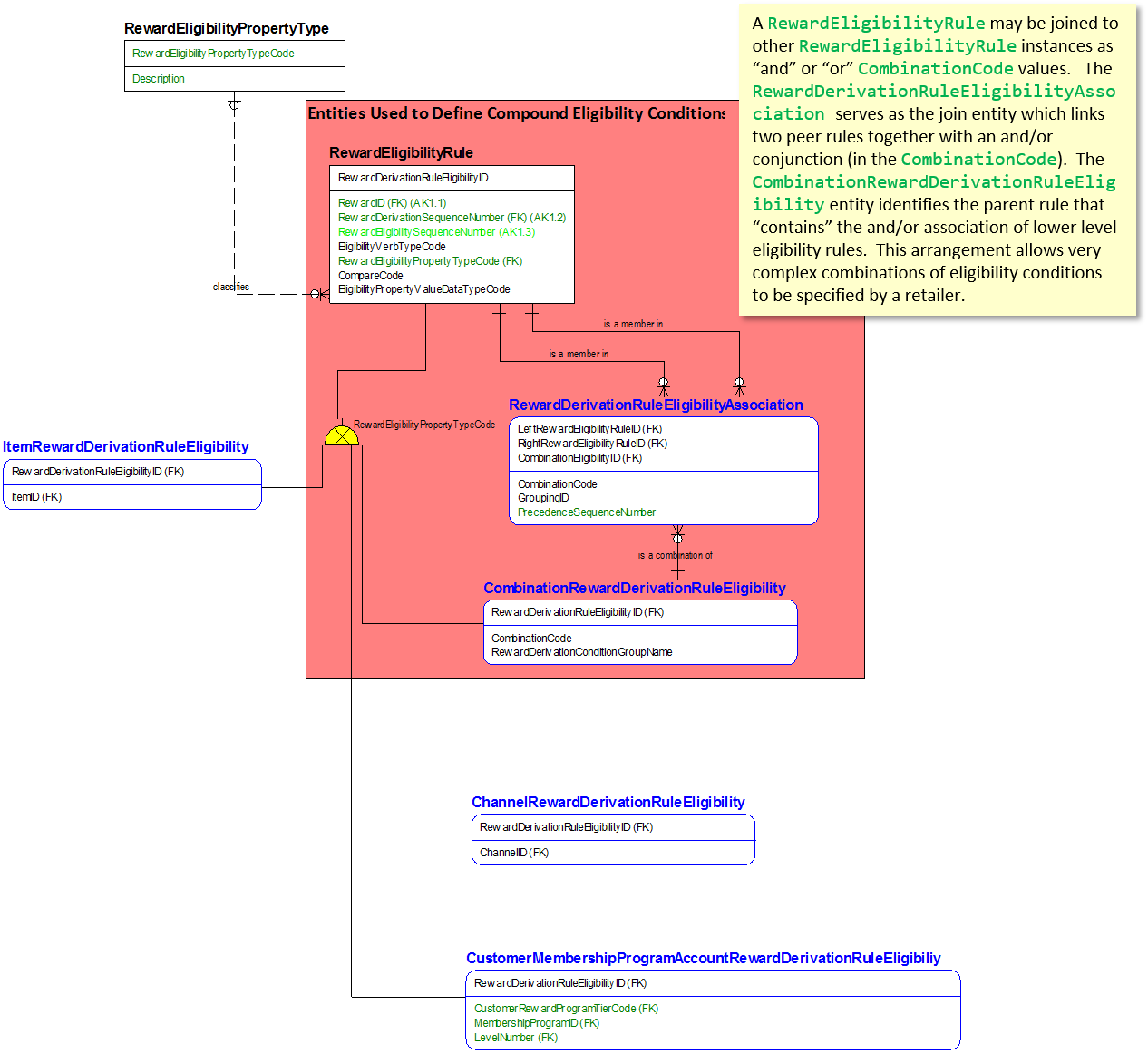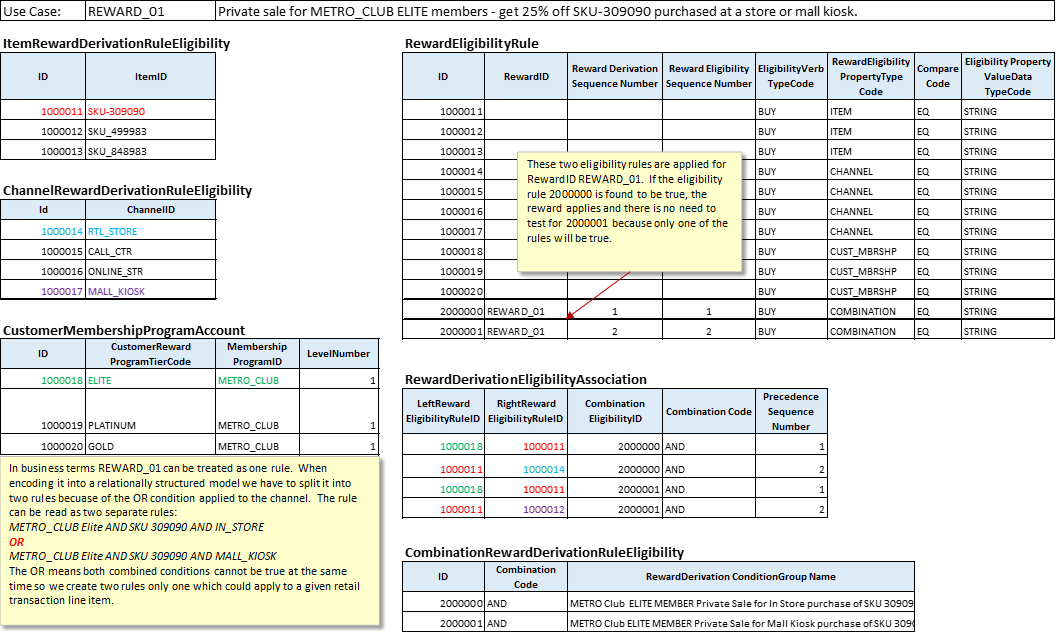Reward Eligibility
A RewardEligibilityRule defines the conditions which must be satisfied before a RewardDerivationRule may be applied to a transaction or transaction line item. The ARTS modeling of reward eligibility rules involves a wide range of subtype entities that represent different conditions for earning rewards. Additionally, the reward conditions may be combined to create compound rules. For example a reward of 100 bonus points can be predicated on a customer being an "ELITE CLUB MEMBER" and making a purchase of $100 or more (i.e. the retail transaction total for merchandise purchased is greater than or equal to $100). The following diagram shows how RewardEligibilityRule is extended to incorporate a variety of different conditions using sub-typing.
Retailers can create a range of reward conditions from simple rules to very complex, compound rules involving a number of "and" and "or" conjunctions. In the diagram shown here, the VIP status and associated rewards are earned based on two eligibility criteria namely the number of orders placed OR the number of customer referrals. RewardEligibilityRules are invoked as a first step in processing rewards.
Figure 34 - Reward Eligibility Rules

The ARTS reward eligibility subtypes cover the most commonly used retail scenarios as shown in the colored blocks. Retailers may extend the rules by adding new subtypes. The ARTS subtypes have foreign key relationships to entity types used as a basis of comparison.
Item-based Eligibility Deep Dive Explanation
The next diagram takes a closer look at how item-based eligibility rules are represented in the ARTS ODM. Its purpose is to illustrate the pattern used to model reward eligibility rules. The same pattern applies to the other kinds of reward eligibility rules.
Figure 35 - Deep Dive Item-based Eligibility Explanation - Illustration of Rule Eligibility Pattern

Combining Reward Eligibility Rules and Reward Derivation Rules
This subsection takes a close look at how ARTS represents different combinations of reward eligibility rules as well as reward derivation rules (they are linked together in the model). Retailers often create rewards that combine eligibility criteria as well a reward derivation rules. There are a basic set of patterns that most retailers use when designing rewards. Note that in ARTS, rewards encompasses both customer membership account and promotion based offers. This approach provides a consistent framework that enables retailers to design broad-based "public" reward programs as well a discretionary, customer-oriented rewards.
The next diagram shows the entities used to associate different reward eligibility rules together into compound rules. The approach used here allows RewardEligibilityRule instances to identify combinations of other eligibility rules as a group using the CombinationRewardDerivationRuleEligibility entity. Retailers may then use the combined eligibility rule to determine if a RewardDerivationRule and Reward apply to a given retail transaction or not.
Figure 36 - Reward Eligibility Compound Rules

The diagram below presents a sample reward eligibility rules set and illustrates how compound eligibility rules would look in a relational database. The diagram contains an explanation of how the and/or combination values would look in tables. This example specifies a reward for customers enrolled in the retailer's METRO_CLUB_ELITE program level that gives them a 25% discount off of SKU-309090 if they purchase it in a store or a mall kiosk. This example reflects how reward conditions may be combined and targeted to specific customers.
Figure 37 - Sample Compound Reward Eligibility Rule With Values
